Aug. 16 to Aug. 22
Huang Li-yung’s (黃禮永) descendants were shocked last month to see that their family grave had been desecrated — again.
Robbers had pried off the ornate stone carvings that flanked the headstone and made off with them. They probably hoped to sell the pieces for cash, as they were the handiwork of Chiang Hsin (蔣馨), whose relatives and disciples left their mark across Taiwan’s many temples and traditional structures.
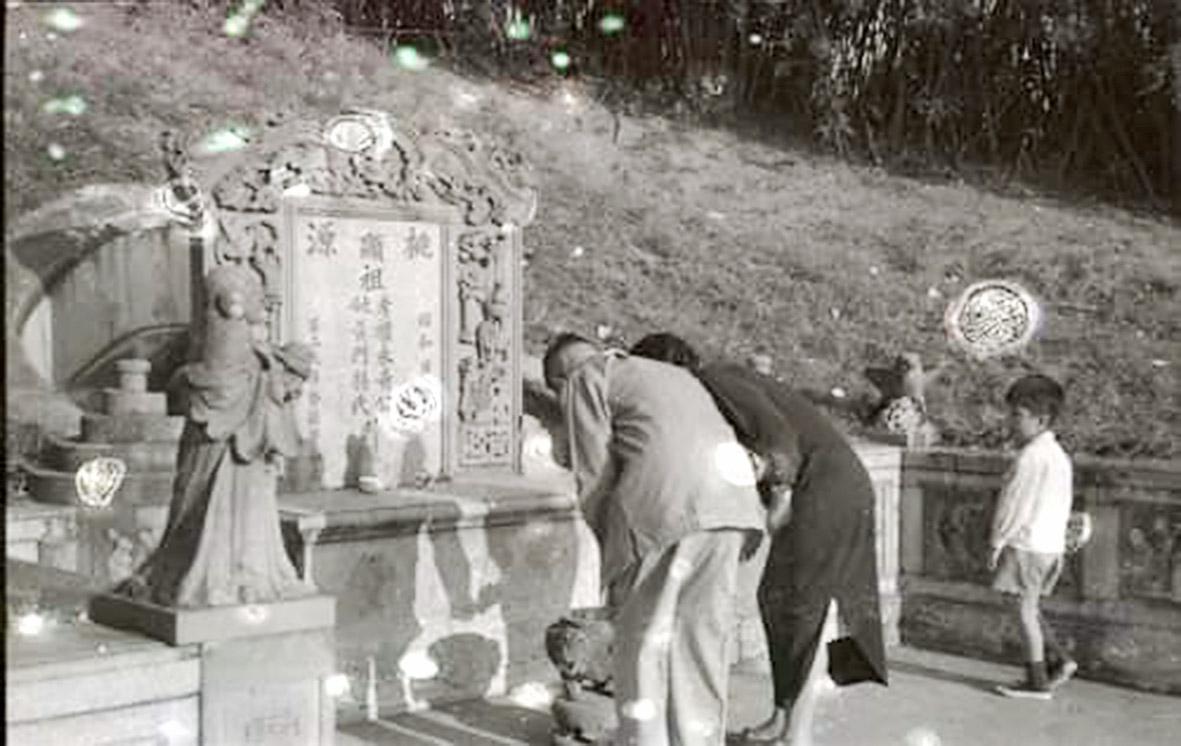
Photo courtesy of Hsu Cheng-yuan
Huang made his fortune milling rice in the late 1800s, propelling his family to the upper echelons of Lukang society where they were only second in wealth to the still-prominent Koo clan. The “Gold and Silver Hall” (金銀廳) that Huang’s sons constructed was one of the area’s best-known landmarks, famed for its gold and silver screens — the former used at weddings and celebrations, the latter for funerals.
The family tomb was built in 1930 and is considered Chiang’s earliest such commission. The first time it was robbed, the police were able to retrieve the pieces. The police came through again last month, apprehending the culprit less than two weeks after the heist. He was an antiques collector.
Chiang is probably the best known in Taiwan out of numerous Chiangs who headed to Taiwan in the early 1900s from a stone-carving village in Huian County, Fujian Province. His first local project was the 1927 renovation of Lukang’s Tianhou Temple, for which he hired a number of Chiangs to help. Huang was one of the project’s main sponsors, and the two got to know each other then.
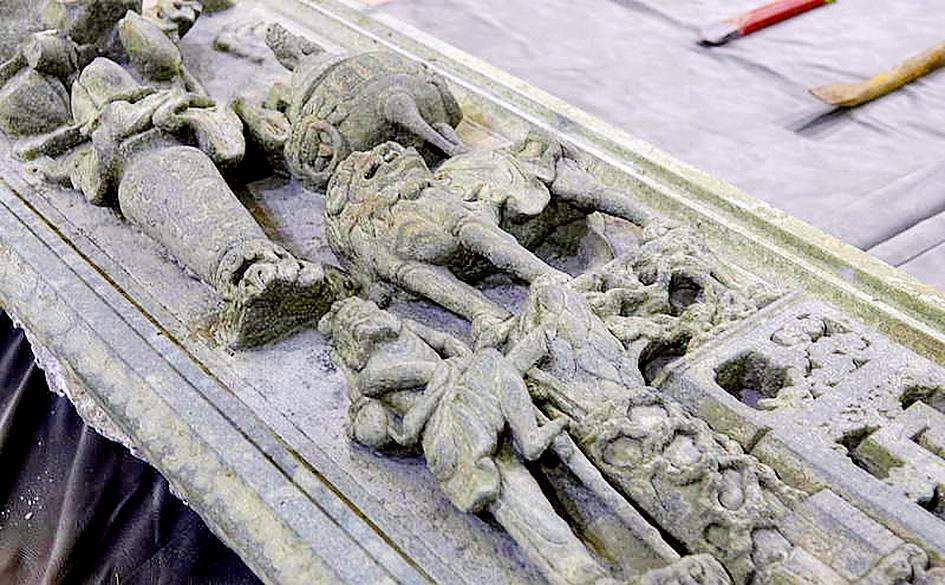
Photo: Liu Hsiao-hsin, Taipei Times
PRIZED SCREEN
There’s not all that much information about Huang’s life. Born in Lukang in 1864 to a family of merchants, he expanded the family’s rice milling business into the Qingyuan Company (慶源商號), which sold general goods as well. During the Japanese colonial era, Huang was active in the community, serving as neighborhood chief with a reputation for helping locals solve their problems. In 1946, Huang launched a donation drive to expand the Weiling Temple (威靈廟), and also funded the construction or renovation of several other public institutions.
To celebrate their mother’s birthday in 1935, Huang’s sons, Huang Chiu (黃秋) and Huang Chun-chieh (黃俊傑), built the Gold and Silver Hall in the family garden. It soon became a gathering spot for local elites and creatives, as they put on regular art gatherings, photography salons and other functions fancy for those times.
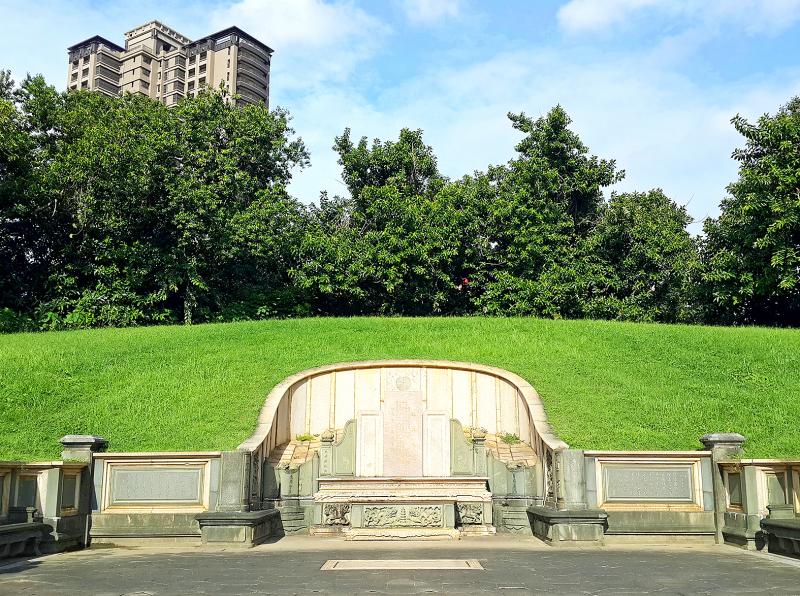
Photo courtesy of Wikimedia Commons
The famous screens were designed by 29 year old woodworker Lee Sung-lin (李松林), who was still trying to make his mark as the fourth-generation scion to a clan of woodworkers. It’s known for its fusion of local and Western aesthetics, something that’s also reflected in the structure’s interior. The Lees also came to Taiwan from China to fix temples and eventually settled — his great-grandfather arrived in the mid-1850s to help renovate Lukang’s Longshan Temple (龍山寺); two of his sons and three grandsons were also notable talents.
Lee Sung-lin began his career at the age of 15, helping to carve furniture for the Koo family mansion. His talent started to shine during a 1924 renovation of the Tianhou Temple and his work would be seen all over Taiwan in the next several decades, as he remained active into his 80s.
CLAN OF CARVERS
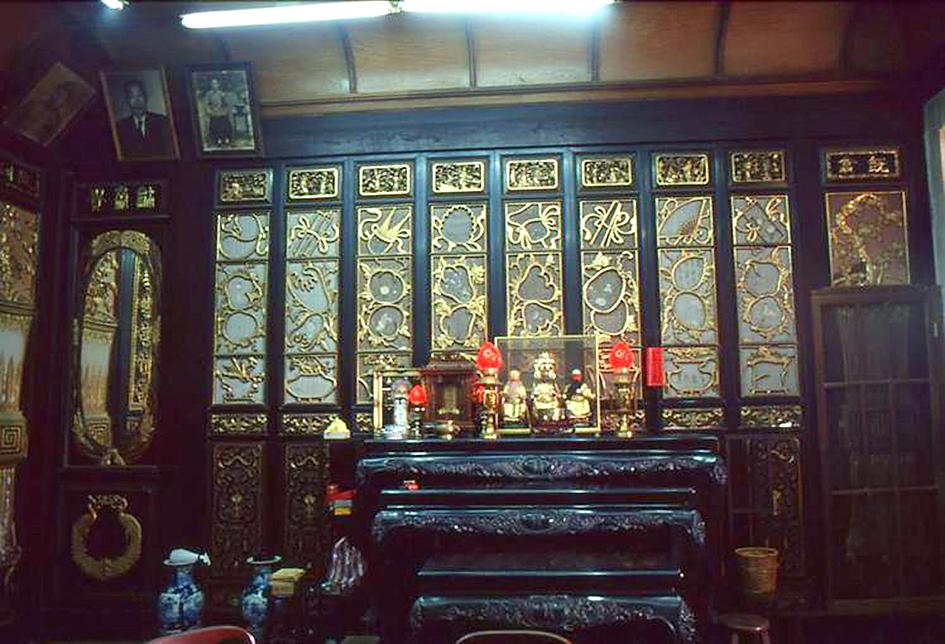
Photo courtesy of Chuang Yen-yu
Chiang Hsin also made a name for himself in Taiwan at the Tianhou Temple, although he died three years before his portion of the project was complete in 1936.
Nicknamed “Turtle Hsin” for his hunchback, Chiang originally ran a stone processing factory in China’s Xiamen Province and his products were often shipped to Taiwan to use in temples and graves. The 1919 renovations of Wanhua District’s (萬華) Longshan Temple partially used his prized bluestone (青斗石), and in 1926 he moved to Taiwan hoping for contracting work.
Chiang was not the first of his clan to move to Taiwan; it was in need of all sorts of artisans after the 1906 Chiayi Earthquake caused serious damage to structures throughout Taiwan.
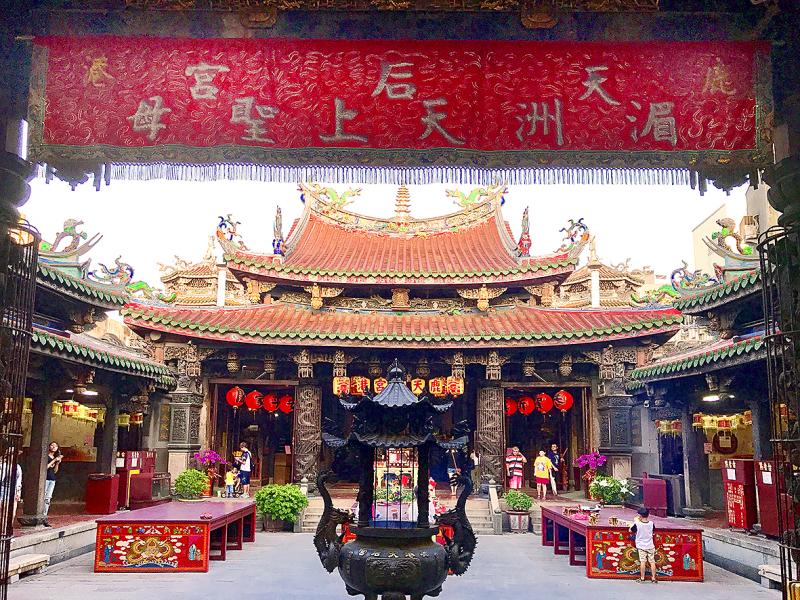
Photo courtesy of Wikimedia Commons
Chiang Wen-shan (蔣文山) and Chiang Tung-tsai (蔣棟材) were among the earlier ones, commissioned in 1908 to carve dragon and flower columns at Beigang’s Chaotian Temple (朝天宮). Chiang Hsi-lai (蔣細來) helped with the Wanhua Longshan Temple renovations as well as the 1925 repairs of Shulin’s (樹林) Jian Temple (濟安宮); Chiang Mei-shui (蔣梅水) in 1924 worked on the Ciji Temple (慈濟宮) in Fengyuan.
Chiang Hsin reportedly enjoyed good relations with the Koo family, who also trace their roots to Huian, so he settled in Lukang, where many temples awaited resuscitation. Chiang won the bid for the Tianhou Temple project and recruited several of his clansmen, including Chiang Mei-shui, to help him. Chiang imported bluestone from Huian, which delayed the project and increased costs, but he insisted on the material. In 1929, the team completed another significant job with the rebuilding of Changhua’s Nanyao Temple (南瑤宮).
Chiang did a few more gravestone commissions after Huang’s, most notably that of Kaohsiung business magnate Chen Chung-ho (陳中和), which took five years to build. Chen’s casket has since been moved to the family plot, and the gravesite is now a municipal cultural relic.
It’s said that Chiang wasn’t the most skilled carver, but he had superb design capabilities and was an excellent strategist and project manager. He died in 1933 and his son-in-law Chang Chin-shan (張金山) took over his mantle. Projects under Chang include the 1938 post-fire reconstruction of Lukang’s Longshan Temple as well as Guangfu Temple in Siluo Township (西螺), Yunlin County.
The Huang family fortune collapsed after Huang Li-yung’s grandson was indicted for fraud. The family eventually faded into history and their prized buildings were left to ruin. The public only remembered them in early 2015, when the Qingyuan Company headquarters were razed without warning.
Fortunately, the Gold and Silver Hall survived, but a year later the proprietor decided to sell it. This sparked a local movement to save the structure, and in 2018 it was registered as a historic building — although it appears to remain in poor shape.
Taiwan in Time, a column about Taiwan’s history that is published every Sunday, spotlights important or interesting events around the nation that either have anniversaries this week or are tied to current events.

April 14 to April 20 In March 1947, Sising Katadrepan urged the government to drop the “high mountain people” (高山族) designation for Indigenous Taiwanese and refer to them as “Taiwan people” (台灣族). He considered the term derogatory, arguing that it made them sound like animals. The Taiwan Provincial Government agreed to stop using the term, stating that Indigenous Taiwanese suffered all sorts of discrimination and oppression under the Japanese and were forced to live in the mountains as outsiders to society. Now, under the new regime, they would be seen as equals, thus they should be henceforth

Last week, the the National Immigration Agency (NIA) told the legislature that more than 10,000 naturalized Taiwanese citizens from the People’s Republic of China (PRC) risked having their citizenship revoked if they failed to provide proof that they had renounced their Chinese household registration within the next three months. Renunciation is required under the Act Governing Relations Between the People of the Taiwan Area and the Mainland Area (臺灣地區與大陸地區人民關係條例), as amended in 2004, though it was only a legal requirement after 2000. Prior to that, it had been only an administrative requirement since the Nationality Act (國籍法) was established in

With over 100 works on display, this is Louise Bourgeois’ first solo show in Taiwan. Visitors are invited to traverse her world of love and hate, vengeance and acceptance, trauma and reconciliation. Dominating the entrance, the nine-foot-tall Crouching Spider (2003) greets visitors. The creature looms behind the glass facade, symbolic protector and gatekeeper to the intimate journey ahead. Bourgeois, best known for her giant spider sculptures, is one of the most influential artist of the twentieth century. Blending vulnerability and defiance through themes of sexuality, trauma and identity, her work reshaped the landscape of contemporary art with fearless honesty. “People are influenced by

The remains of this Japanese-era trail designed to protect the camphor industry make for a scenic day-hike, a fascinating overnight hike or a challenging multi-day adventure Maolin District (茂林) in Kaohsiung is well known for beautiful roadside scenery, waterfalls, the annual butterfly migration and indigenous culture. A lesser known but worthwhile destination here lies along the very top of the valley: the Liugui Security Path (六龜警備道). This relic of the Japanese era once isolated the Maolin valley from the outside world but now serves to draw tourists in. The path originally ran for about 50km, but not all of this trail is still easily walkable. The nicest section for a simple day hike is the heavily trafficked southern section above Maolin and Wanshan (萬山) villages. Remains of